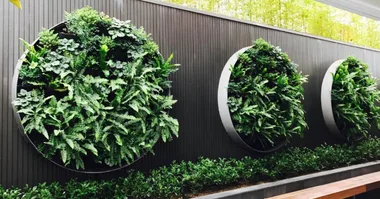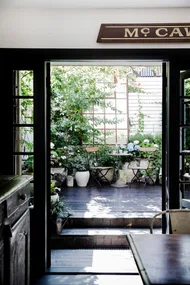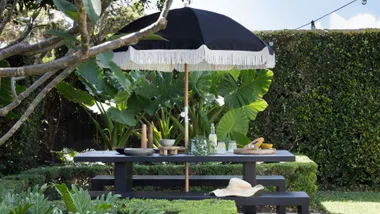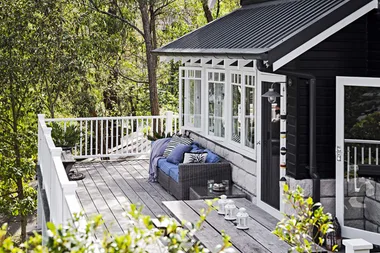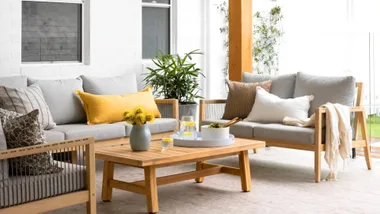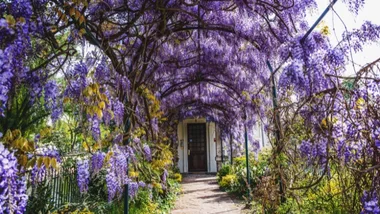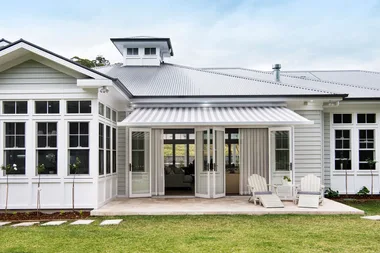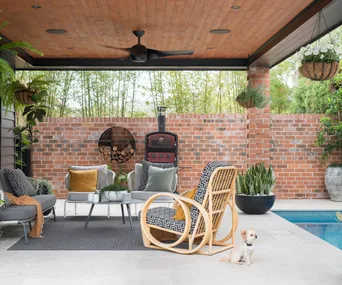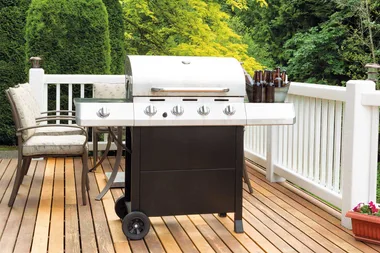Crazy paving might sound like a cheap alternative to a full-scale landscaping job but it’s not only a bona fide design resolution for a stone finish, it’s a trend that continues to gain ground in homes everywhere.
Landscaping your backyard with outdoor pavers can take it from sad and neglected to a series of spectacular spaces to relax, entertain and enjoy an outdoor lifestyle.
What makes crazy paving so popular?
“The natural texture as well as the colour and size variations make crazy paving an extremely versatile flooring option that is suitable for almost any application,” says Eco Outdoor marketing manager Rebecca Fox.
“The format allows for movement in a flooring aesthetic that is also a perfect means to visually break open a space. It can be used throughout the external and internal spaces of a home.”
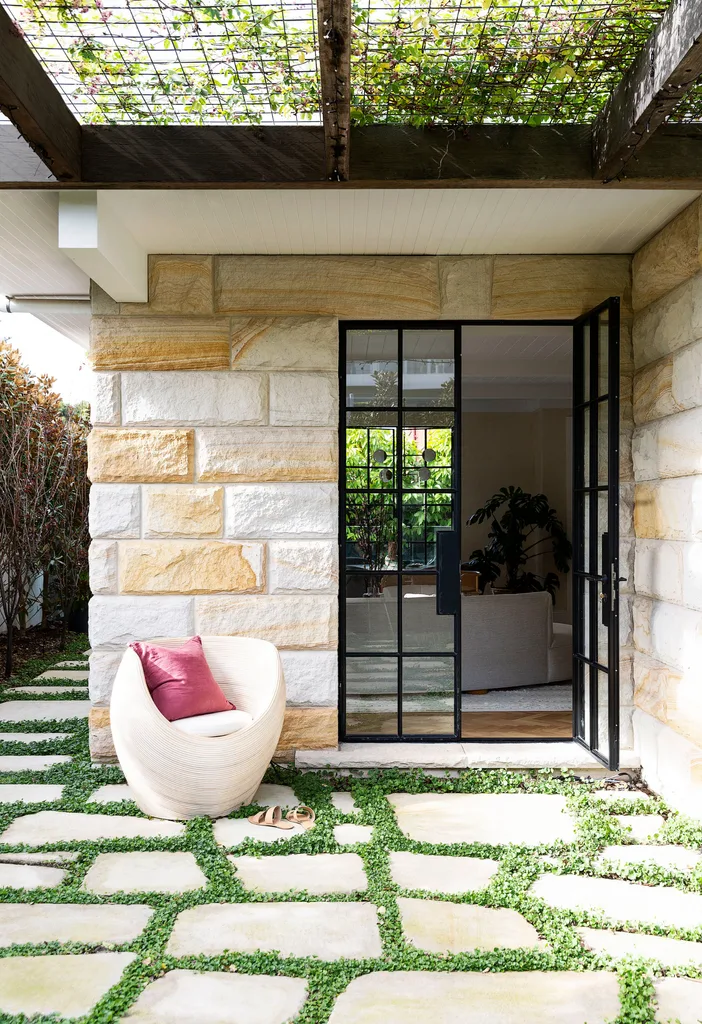
A hardy ground cover weaves between the lines of crazy pavers at a newly built home in Sydney’s northern beaches.
(Credit: Photo: Simon Whitbread)How does crazy pave work?
Also called flag stone, the concept of crazy pave was born out of using up otherwise wasted off cuts or broken pieces during the installation of larger cut stone and outdoor pavers. From a simple tidy up in a small courtyard to a full-scale landscaping brief, this method of laying stone is super effective and, depending on your budget, can make a real difference using outdoor pavers to create zones.
“I love crazy paving,” says award-winning landscape and interior designer Adam Robinson. “To me, it provides a more organic approach to paving. I find it works especially well in areas where we don’t have a lot of room for planting and softness, but you still want an organic garden feel.”
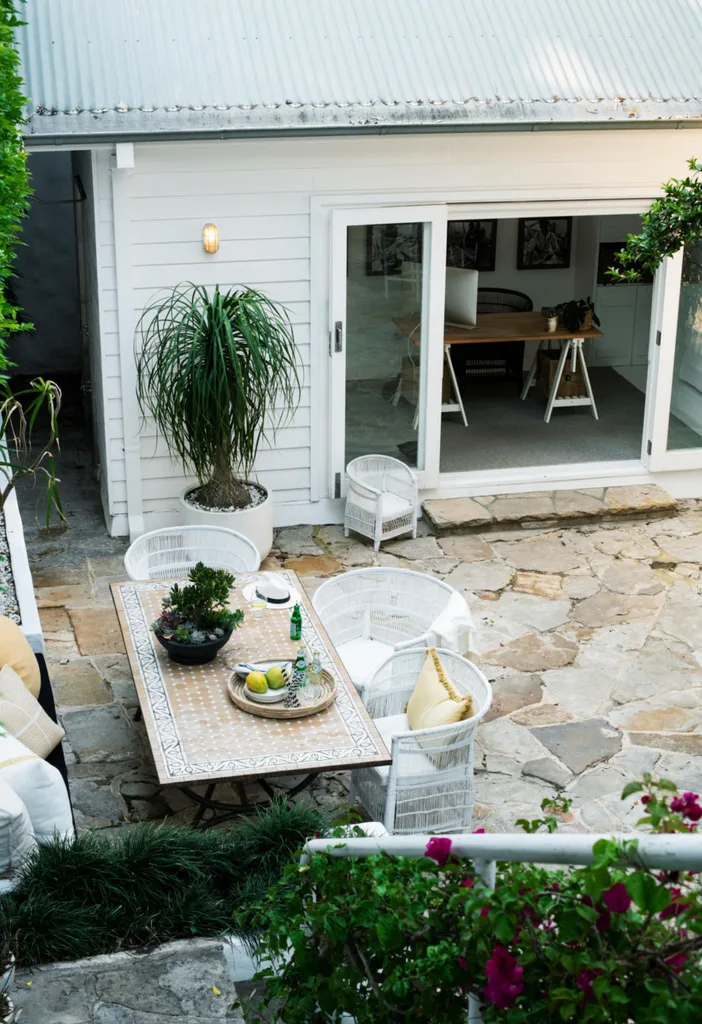
Crazy pavers add a Mediterranean flair to this leafy courtyard in Sydney.
(Credit: Photo: Brigid Arnott / Styling: Lisa Hilton)What sort of architecture does crazy pave suit?
With the rise in popularity of mid-century and 1970s home renovations, homeowners are embracing existing crazy pave patterns in outdoor pavers and restoring them with love, resulting in a combination of retro charm and good financial sense.
“If you’ve got a mid-century home, you could absolutely use crazy paving to be sympathetic to the period of architecture, but it also works beautifully in a contemporary space,” says Adam.
The final result doesn’t have to reflect the 1970s either – outdoor pavers laid in this style, “Can create a create a seamless, organic flooring surface that wonderfully complements contemporary, architecture,” says Rebecca.
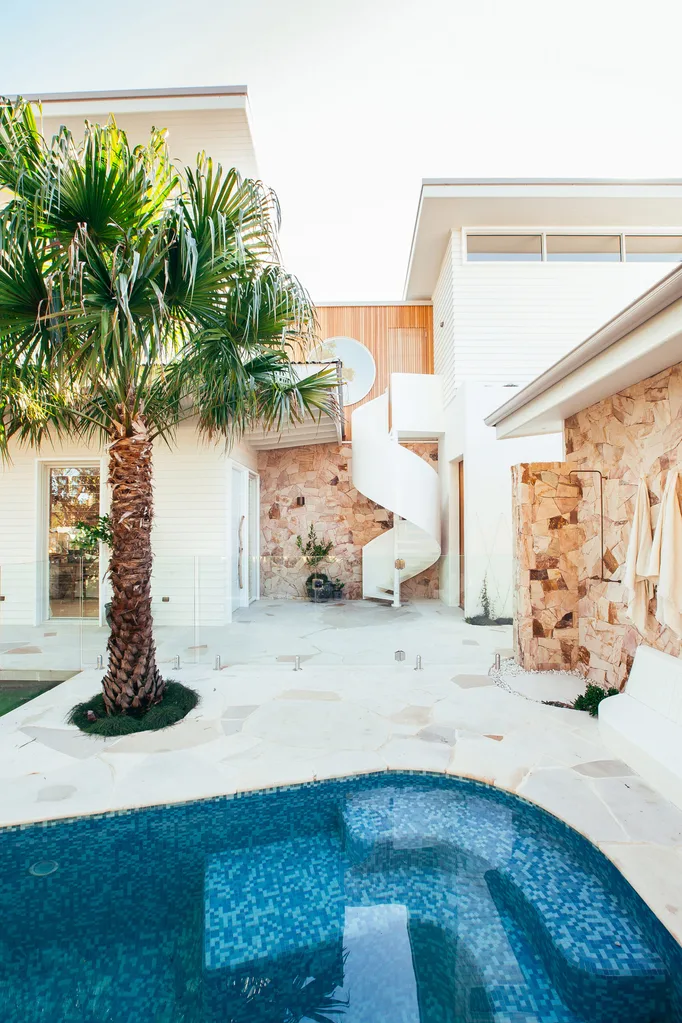
Serial renovators Kyal and Kara chose to surround their pool with crazy pavers. “We eventually plan to do a white curved pergola over the large crazy paved area with a built in barbecue,” says Kara.
Choosing a stone for crazy pave
Choosing the right stone is key to a cohesive look. “It comes in many different formats and colours, so to allow it to work in your space, use a tone that relates back to the exterior house colours,” suggests Adam.
There’s most than just aesthetics to consider here, however. “Consider where the product will be used,” says Rebecca. “For a heavily used pathway, for example, Porphyry crazy paving would be ideal due to its rich and varied colour that makes it very forgiving to wear in tear and its strength and low slip rating.”
“The crazy paving format is being used a lot at the moment and across a variety of our stone products including bluestone, limestone and split stone,” says Rebecca.
Where can you use it?
Because it’s laid in a random pattern, crazy pave lends itself to irregular shapes and pathways just as easily as more formal styles of outdoor paving.
“Crazy paving is an ideal choice to bring texture and interest to a project,” says Rebecca. “We’re seeing it used to create a statement around a swimming pool or at the entrance to a home.”
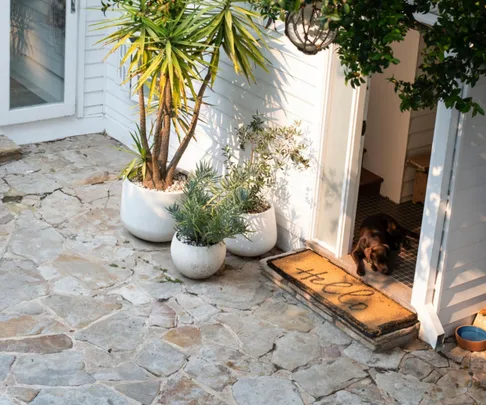 Brigid Arnott
Brigid Arnott
